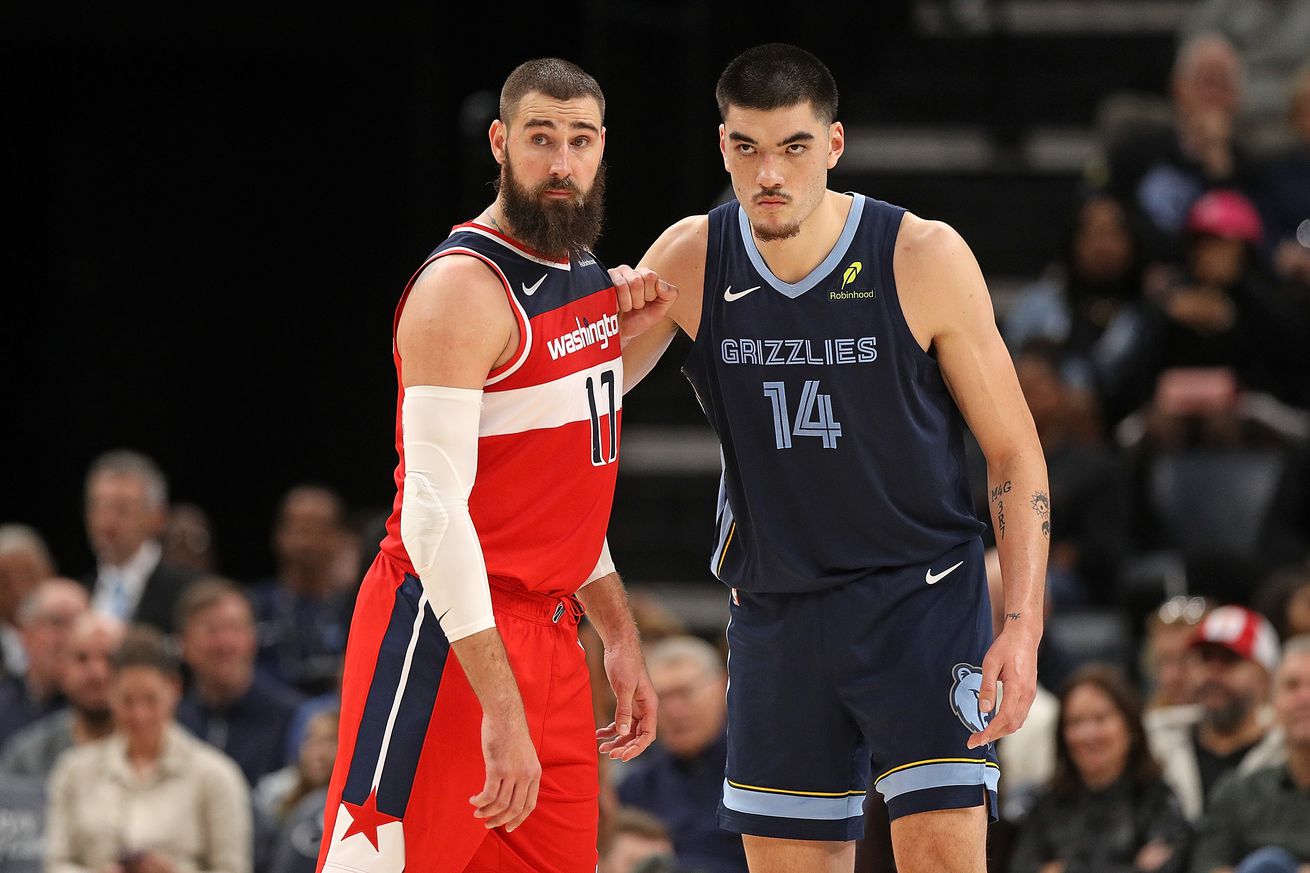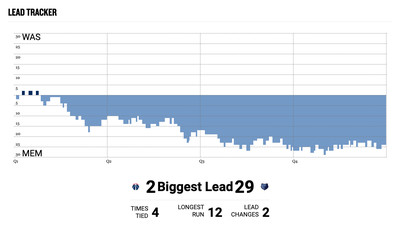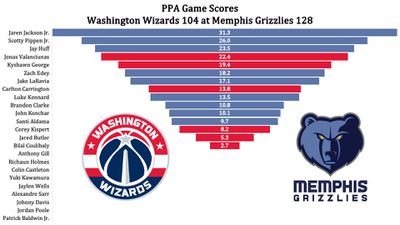
Stats, analysis, commentary.
Despite missing their top three guards, the Memphis Grizzlies administered a thorough beatdown of the Washington Wizards. Memphis built a double-digit first quarter lead and added to it the rest of the way. They led by as much as 29 in the fourth quarter and coasted home to a comfortable 128-104 win.
It was a fast-paced game and somewhat sloppy game. The pace makes sense given that the Wizards entered the game second in pace (possessions per 48 minutes), and the Grizzlies fourth. The turnovers (17 for the Grizzlies; 18 for the Wizards) were a bit elevated for both teams.
The Grizzlies won all four of Dean Oliver’s four factors (see table below), but the key was shooting from the floor. The team that shoots better wins about 80% of the time in the NBA. Tonight, Memphis’ effective field goal percentage was 54.6% to Washington’s 46.2%.
As mentioned, despite missing Ja Morant, Desmond Bane, and Marcus Smart, Memphis outplayed the Wizards start to finish.

The Grizzlies’ dominance shows up in the individual numbers, as well. For Washington, Jonas Valanciunas was good, and Kyshawn George was decent. Everyone else’s performance ranged from meh to terrible.
For Memphis, virtually everyone who got rotation minutes was at pretty good. The exceptions were Santi Aldama and Jaylen Wells.
Games like this should be expected for the Wizards. It’s a rebuilding team with a ton of work ahead to upgrade the roster with new players, and a ton of work to help players currently on the roster improve. With young players, progression is seldom linear. It’s going to take time.
A few thoughts/observations:
- It wasn’t great, but I was happy with how Bub Carrington played. He shot just 4-11 from the floor and 1-5 from deep. He committed four turnovers and three fouls. He also grabbed 10 rebounds (for a team that desperately needed anyone to get boards), had eight assists, and four steals. It doesn’t always work out, but Carrington is always trying to make plays. As he gains experience and builds his body, more of the plays that don’t quite work will start to.
- Valanciunas is a massive human being, who somehow was made to look small by Memphis center Zach Edey.
- Starting in place of Morant/Bane/Smart, Scotty Pippen Jr. had his first triple-double — 11 points, 10 rebounds, 11 assists.
- Former Washington player Jay Huff is making a home for himself with the Grizzlies. He’s shooting threes, driving closeouts, and defending.
- Rough outing for Jordan Poole — 10 points on 3-10 shooting, 2 rebounds, 1 assist, 4 turnovers and 3 fouls.
Four Factors
Below are the four factors that decide wins and losses in basketball — shooting (efg), rebounding (offensive rebounds), ball handling (turnovers), fouling (free throws made).
Stats & Metrics
Below are a few performance metrics, including the Player Production Average (PPA) Game Score. PPA is my overall production metric, which credits players for things they do that help a team win (scoring, rebounding, playmaking, defending) and dings them for things that hurt (missed shots, turnovers, bad defense, fouls).
Game Score (GmSC) converts individual production into points on the scoreboard. The scale is the same as points and reflects each player’s total contributions for the game. The lowest possible GmSC is zero.
PPA is a per possession metric designed for larger data sets. In small sample sizes, the numbers can get weird. In PPA, 100 is average, higher is better and replacement level is 45. For a single game, replacement level isn’t much use, and I reiterate the caution about small samples sometimes producing weird results.
POSS is the number of possessions each player was on the floor in this game.
ORTG = offensive rating, which is points produced per individual possessions x 100. League average last season was 114.8. Points produced is not the same as points scored. It includes the value of assists and offensive rebounds, as well as sharing credit when receiving an assist.
USG = offensive usage rate. Average is 20%.
ORTG and USG are versions of stats created by former Wizards assistant coach Dean Oliver and modified by me. ORTG is an efficiency measure that accounts for the value of shooting, offensive rebounds, assists and turnovers. USG includes shooting from the floor and free throw line, offensive rebounds, assists and turnovers.
+PTS = “Plus Points” is a measure of the points gained or lost by each player based on their efficiency in this game compared to league average efficiency on the same number of possessions. A player with an offensive rating (points produced per possession x 100) of 100 who uses 20 possessions would produce 20 points. If the league average efficiency is 114, the league — on average — would produced 22.8 points in the same 20 possessions. So, the player in this hypothetical would have a +PTS score of -2.8.

